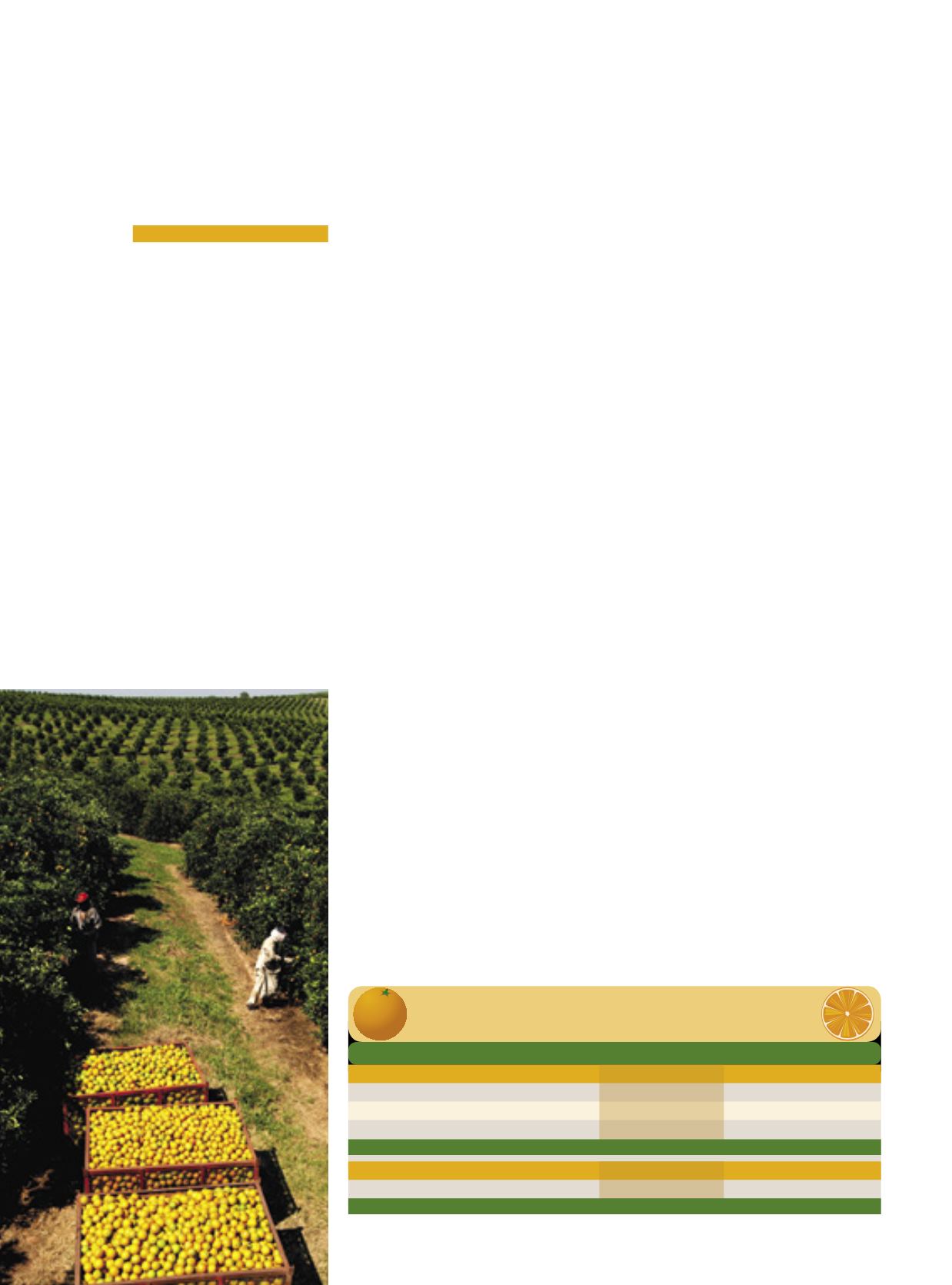
Following the example of the sun, to
which it is similar in shape, energy and col-
or, the Brazilian orange is the king in the
realm of citrus fruits, both at national and
international level. In spite of the recent
setback, it preserves its vigor and shine,
as the most produced fruit in the Coun-
try, leader in volume and also in the main
product extracted from it and exported
– juice. Along with the lemon (exported
fresh) and tangerine, it forms the famous
triplet of the segment, which generates
revenue of about R$ 9 billion, and approx-
imately 250 thousand Jobs, adding health
and vitamin to the economy, offered by
the fruits themselves to the human body.
It was as a source of health (vitamin C),
besides its good taste, that it became fa-
mous in maritime expeditions that paved
the way for the discovery of the Americas,
after the fruit arrived in Asia, entered Eu-
rope and finally made it to the new world,
where it created deep roots and began to
produce fruit in plenty. Finally, it returned
to the world in the form of juice, of which
Brazil is the biggest supplier. It has been
present in Brazil since the colonial times.
The imposing producing area in the inte-
rior of São Paulo began to structure itself
in the second half of the 20th century. The
huge and concentrated processing industry
was created in the 1960s, when the crop in
the United States receded drastically.
Sunshine
Ledby the orange and
its juice, the renowned
Braziliancitrus sector
receded, but is on
a renewal process
andgradually getting
backon track
In the 1980s, Brazil began to lead the
production and export of orange juice con-
centrate, based on a solid technological field
structure – the Citrus Defense Fund (Fun-
decitrus), for example, was created in 1977
– along with a modern warehousing, trans-
portation and processing system. After this
period, the sector continued making strides,
with ups and downs, depending on the in-
ternational market, the destination of almost
the entire production volumes. Recently, af-
ter a drop in global juice consumption, once
again the production volume suffered a re-
duction and the segment is now considering
the best manners to surmount the hurdle.
“In the history of the activity, there has
never been a period of turbulence like in
the past 15 years”, comments Maurício
Mendes, a member of the Citrus Con-
sulting Group (GCONCI), in São Paulo.
Mendes recalls strong attacks against the
juice, challenging the health benefits of
the product, besides field diseases, “mod-
ifying and turning the production system
more expensive in the orchards in Brazil
and the United States”. However, “in spite
of everything”, he analyzes the sector from
a positive point of view, especially for “those
who manage to be efficient and competitive,
engaged in agricultural production, industri-
al and/or distribution”. As after the storm al-
ways comes a calm, the sector is again spot-
ting the sun shining amid the clouds.
8
Sílvio Ávila
DA COR DO OURO
The color of gold
Destaques da citricultura no Brasil
Fontes:
IBGE e Agrostat/Mapa – Referente a 2014
Fonte:
CitrusBR – Referente à safra 2014/15 (Produção/Exportação FCOJ Equivalente 66º Brix).
Produtos
Produção (t)
Exportação (t) Valor Prod. (R$ mil)
Laranja
16.927.637
20.111
5.535.436
Limão
1.101.762
92.301
803.200
Tangerina
965.139
43
742.730
Produto
Produção (t)
Exportação (t)
Valor Exp. (US$ mil)
Suco laranja
1.128.000
1.137.897
2.042.989


